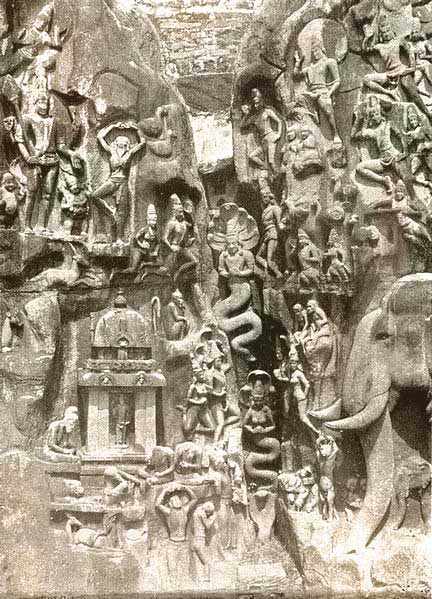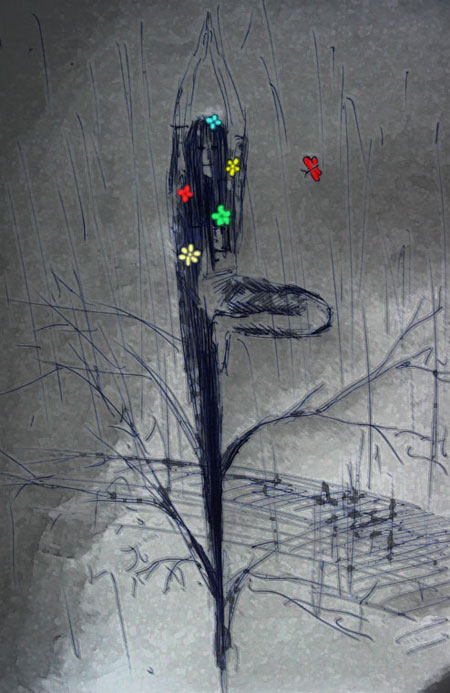Yoga Day 2019
21st June is celebrated as International Yoga Day. Here is today’s asana.

One of the most recognizable yoga asanas, Vrikshasana has been identified in Indian relics dating back to the seventh century.
In ancient times, wandering holy men called sadhus would meditate in this posture for long periods of time as a practice of self-discipline.
In some traditions, the pose is called Bhagirathasana, to honor a great yogi king from India who—legend says—stood on one leg for a long time to appease the Hindu god Shiva and to be allowed to bring the sacred river Ganges from heaven to earth. “This posture represents the intense penance of Bhagiratha,” says Kausthub Desikachar, son and student of the yoga master T.K.V. Desikachar and chief executive of the Krishnamacharya Yoga Madiram in Chennai, India. “It’s supposed to motivate us to work toward our goal even if there are many obstacles in the way.” That doesn’t mean you have to stand on one leg for years. “The point is to make a dedicated effort to one’s practice,” he says. “It makes us strong, it enhances our willpower, and we achieve amazing benefits.”

Benefits of the Vrikshasana / Tree Pose
- This pose leaves you in a state of rejuvenation. It stretches the legs, back and arms, and invigorates you.
- It brings balance and equilibrium to your mind.
- It helps improve concentration.
- This posture has been found to relieve some cases of sciatica.
- It makes the legs strong, improves balance, and opens the hips.
- Helps those who are suffering from sciatica.
Boost Your Balance
Learning to balance often has more to do with your mental state than your physical abilities. If you’re stressed, or if your mind is scattered, your body is likely to be unsteady, too. And, of course, the very practice of trying to balance is stressful. Most of us, as we try to balance, have unsettling thoughts like “I can’t do this” or “Everyone’s watching me wobble.”

Here are three tools you can use to quiet distracting mental chatter and steady your mind:
1. Be Aware of Your Breath: Paying attention to your breath helps unite body and mind and establish a state of physiologic calm. As yoga master B.K.S. Iyengar writes in his classic guide, Light on Yoga, “regulate the breathing, and thereby control the mind.”
2. Direct Your Gaze: A steady gaze, or dhrishti, helps focus your mind. In Vrikshasana, anchoring your gaze on the horizon or a fixed point directs energy forward to keep you upright.
3. Visualize Your Tree: Imagine that you are a tree—with your feet rooted firmly in the earth and your head extending up toward the sun. Take a moment to meditate on what “tree” means to you and find an image that suits your body and temperament. Invite this mental picture to guide you toward stability.

Stand in Tadasana with your hips directly over your feet and your right side close enough to a wall to lightly rest the fingertips of your right hand there for support. Lift and spread your toes, then set them on the floor, pressing down evenly through all four corners of each foot—the mounds of the big toe and baby toe and the inner and outer heels. Stack your joints: knees over ankles, hips over knees, shoulders over hips, and ears over shoulders. Bring your left hand to the center of your chest, in half prayer position.
Take a moment to enjoy the gift of having two strong legs. Then mentally send roots down through the earth under your right leg as you imagine attaching a silk cord to the crown of your head, drawing you up. Keep this sense of simultaneously rooting and lifting as you bend your right knee and bring the sole of your right foot to your inner left thigh. You can place your right foot anywhere along the left leg, or if you feel steady, take your right ankle with your right hand and place the heel into the little notch at the top of the thigh just below the groin, toes facing down. Press the sole of your foot and your inner thigh equally toward each other. Take five deep breaths, release the pose, then switch sides.

Center Your Tree
Now it’s time to practice the full pose away from the wall. If you’re on a wooden floor, try the posture without a mat, letting your feet connect directly with the firm surface. Begin by breathing steadily in Tadasana. Root down through your legs and feet and lengthen up through your torso and head. Shift your body weight to the left leg, and pick up your right heel, keeping your right toes touching the floor. Bring the sole of your right foot to your left ankle and open your right knee out to the right—keeping your toes on the floor if you like. Anchor your drishti at eye level on the horizon and press your palms together in front of your heart in the prayer position, or Anjali Mudra.
Bring your fingertips to the frontal hip bones (the bony points on the front of your pelvis) to be sure it’s in neutral and one side isn’t lifting higher than the other. Lengthen your waist and gently draw your bent knee back to help open the thigh, all the while keeping your pelvis in neutral. If you are comfortable, bring your foot to the inside of the left thigh. Release your tailbone toward the floor. Elongate your spine as you inhale and press the foot of your standing leg down firmly as you exhale. When you feel ready to experiment with your balance, inhale as you reach your arms up toward the ceiling, parallel to each other with your palms facing in. (In some versions of the pose the palms touch. Try it both ways to see which you prefer.) Lengthen through your fingers as you relax your shoulders, drawing your shoulder blades down your back. Stay in the pose for several slow, steady breaths, keeping your face passive. Then, if you want an extra challenge, try staying balanced in Vrikshasana with your eyes closed. Repeat the pose on the other side.

Steady Body, Calm Mind
Vrikshasana can bring a wonderful sense of inner peace. It teaches you how to be both strong and supple, to be rooted without being rigid.
A tree must be able to sway in the wind—or risk having its branches or trunk snap—so the key is to feel rooted in your feet. If you’re unsteady in the pose, start from the ground up and make sure your toes are relaxed and long, the sole of your foot is pressed evenly into the floor, and the muscles of your standing leg are engaged.
